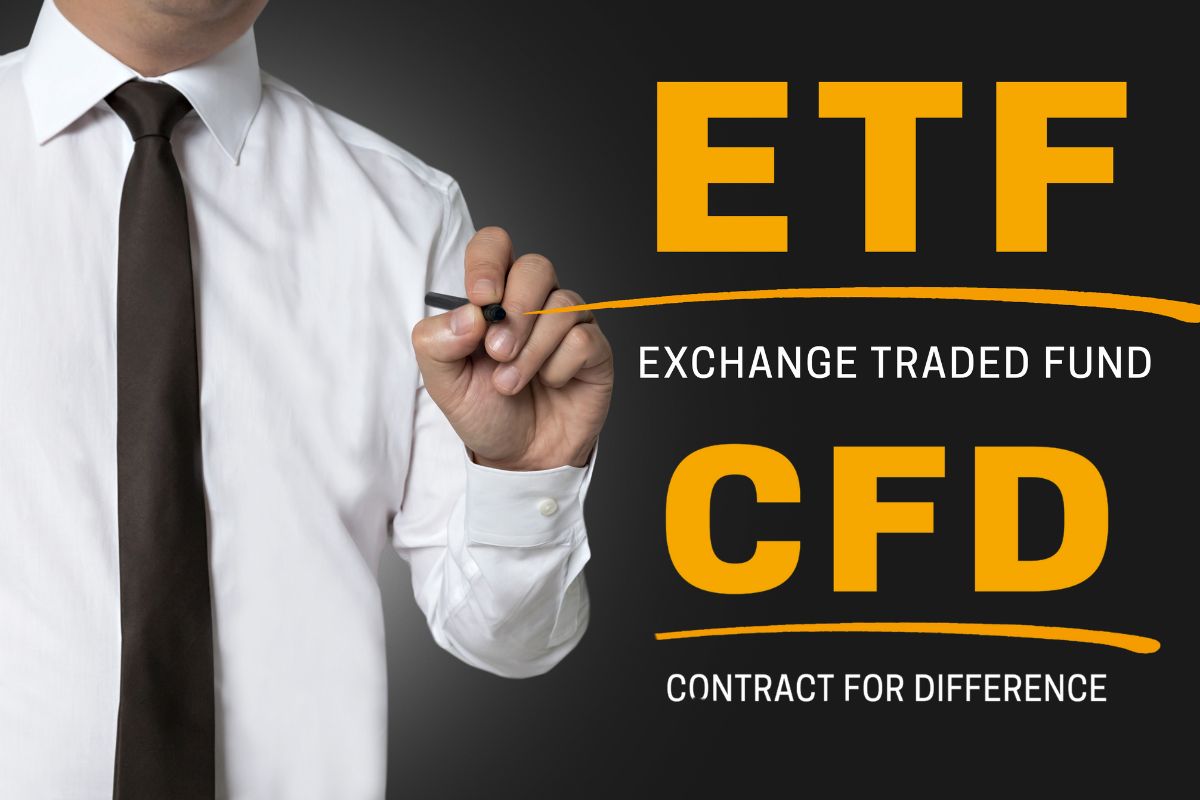CFDs and ETFs are two popular financial instruments that offer different ways to trade the markets. Contracts for Difference (CFDs) are financial instruments that allow individuals to speculate on the price changes of an underlying asset, such as stocks, indices, or commodities, without actually owning the asset. ETFs, or exchange-traded funds, are baskets of assets that track the performance of a specific market or sector, such as technology, energy, or healthcare, and can be bought and sold like stocks on an exchange. In this article, you will learn how to combine the benefits of both CFDs and ETFs by trading CFDs on ETFs, which allows you to access a wide range of markets and sectors, amplify your returns with leverage, and take advantage of price movements in both directions.
How to Trade CFDs on ETFs
If you are interested in trading CFDs on ETFs, you will need to find a reliable CFD broker that offers a wide range of ETF CFDs. A CFD broker grants access to a trading platform that enables users to view market data, charts, indicators, and tools necessary for analyzing and executing trades. Additionally, leverage is available, allowing larger positions to be opened with less capital and posing a higher risk. To trade CFDs on ETFs, you will need to follow these basic steps:
- Choose an ETF CFD that suits your trading strategy and goals. To make an informed decision, it is advisable to research the composition, performance, fees, and liquidity of ETFs. Additionally, utilizing technical and fundamental analysis can aid in identifying market trends and determining potential entry and exit points.
- Decide whether you want to go long or short. Going long means you expect the exchange-traded fund’s price to rise while going short means you expect it to fall. You can benefit from both upward and downward movements in the market by engaging in CFD (Contract for Difference) trading on ETFs (Exchange-Traded Funds).
- To initiate a trade, simply indicate the desired quantity of contracts to purchase or sell. You can also set a stop loss or a take profit order to manage your risk and lock in your profits. A stop loss will close your position automatically if the market moves against you by a certain amount, while a take profit will close your position automatically if the market reaches your desired profit level.
- It is important to regularly monitor and make necessary adjustments to your trades. This can be done by utilizing different indicators and tools to track market movements and evaluate the performance of your position. Additionally, you can manually close your trade at any point by reversing your original order.
Trading Contracts for Difference (CFDs) on Exchange Traded Funds (ETFs) can be a beneficial means of diversifying your portfolio and gaining exposure to diverse markets and sectors. It is important to acknowledge the potential risks involved in trading, such as leverage, volatility, and market gaps. It is advisable to approach trading with caution and implement risk management techniques to protect your invested capital.
Advantages of CFD Trading on ETFs
As we have seen, CFD trading on ETFs can offer many benefits to traders who want to diversify their portfolios and leverage their positions. Let’s take a look at some of the advantages of CFD trading on ETFs.
Access to a Wide Range of Markets & Sectors
By utilizing CFDs to trade on ETFs, individuals have the opportunity to access a diverse array of markets and sectors that may otherwise be challenging or expensive to enter. For example, you can trade CFDs on ETFs that track emerging markets, commodities, currencies, or niche industries, without having to buy individual securities or deal with foreign exchange fees.
Ability to Use Leverage and Lower Capital Requirements
Contract for Difference (CFD) trading on Exchange-Traded Funds (ETFs) offers the benefit of leverage, enabling you to open larger positions with a smaller capital investment. While this can increase potential profits, it also exposes you to higher potential losses. Leverage also reduces the capital requirements for trading, as you only need to deposit a fraction of the total value of your position as margin.
Chance to Profit from Both Rising & Falling Markets
CFD trading on ETFs enables you to go both long and short, which means you can speculate on the price movements of the ETFs in both directions. You can profit from rising markets by buying CFDs on ETFs, or from falling markets by selling CFDs on ETFs. This gives you more flexibility and opportunities to trade in different market conditions.
Lower Fees and Commissions
CFD trading on ETFs typically involves lower fees and commissions than buying or selling the actual ETFs. This is because you do not own the underlying assets but only trade on their price movements. You also avoid the extra fund fees that some ETFs may charge, such as management fees, administration fees, or performance fees.
Bottom Line
CFDs and ETFs are two powerful tools that can help you trade the markets with more flexibility and efficiency. By trading CFDs on ETFs, you can access a wide range of markets and sectors, use leverage to amplify your returns, and profit from both rising and falling markets. Engaging in CFD trading on ETFs can prove to be a beneficial method for diversifying one’s investment portfolio and obtaining access to a variety of markets and industries. However, it is crucial to approach such trades with prudence and understanding.











